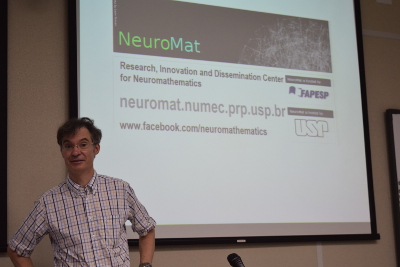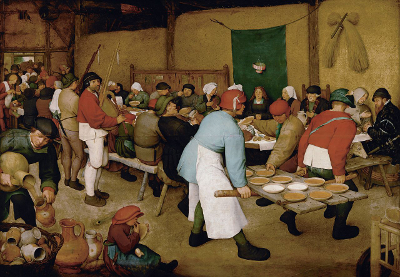
Goals, challenges and horizons of spike sorting
Dec 16, 2014
 |
How do we distinguish the activity of one or more neurons in a set of recorded neural activity? How do we assign spikes to different neurons? What mathematical, computational tools are available to sort spikes? These questions, among others, informed a three-day-long training on spike sorting that FAPESP's Research, Innovation and Dissemination Center for Neuromathematics (CEPID NeuroMat) hosted in São Paulo at the end of November (25-27), with Prof. Christian Pouzat, a researcher of the Applied Maths Laboratory of the Paris-Descartes University and a specialist in spike sorting.
NeuroMat's training on spike sorting related directly to a key challenge of neuroscience, according to Prof. Pouzat. “Neuroscientists use extracellular recordings to monitor many neurons while keeping tissue damage at a minimum, but the collected raw data are then mixtures of activities --from many neurons-- that have to be separated or sorted before most physiologically relevant questions can be addressed.” This unmixing is what is referred to as "spike sorting" by neurophysiologists.
The training on spike sorting, called "Spike sorting: What is it? Why do we need it? Where does it come from? How is it done? How to interpret it?," drew wide interest. Types of participation were fourfold. Around forty people were able to join in at least one training section at the University of São Paulo. Research groups in three universities –the Federal University of Rio de Janeiro, Federal University of Bahia and University of L'Aquila– took part of the event via videoconference. Around thirty people connected directly to the event via Skype, organizing collective gatherings in universities such as the Federal University of Minas Gerais and Federal University of Rio Grande do Norte. Live streaming was made available and had over 500 viewers, with connections mostly from Brazil and India.
 |
Imagine the scene at Pieter Bruegel's “The Peasant Wedding,” said Prof. Pouzat. The challenge of spike sorting is equivalent to isolating what each person in the room is saying, in a language we are unfamiliar with. In order to deal with this challenge, researchers must find the individuals contributing to the data, find a set of parameters to characterize the signal that each individual generates, indicate the probability for each individual to have generated the recorded signal in the data set (in a context with high levels of noise and ambiguity) and do that as automatically as possible.
On the first section, Prof. Pouzat addressed the definition of spike sorting and reviewed the history of the field. He presented the historical development of sorting techniques and ideas (a development that as he said went hand in hand with the development of hardware, amplifiers and computers, found in neurophysiology labs). On the second section. Prof. Pouzat talked on spike detection, dimension reduction, clustering, sampling jitter cancellation and superposition resolution. The last talk revolved on improving sorting quality through stochastic modeling of spike trains.
A second training on spike sorting, with Prof. Pouzat, has been announced by Prof. Antonio Galves, NeuroMat's principal investigator. The general motivation of this second round is to have applied exercises with NeuroMat data. There is no official date for this second training yet. Prof. Pouzat has indicated the possibility of strengthening his collaboration with NeuroMat.
The whole November 2014 training with Prof. Pouzat on video should be soon available on the internet at USP's IPTV website, here. An edited version will also be made available. The NeuroMat scientific dissemination team will also work on a short movie presenting goals, challenges and horizons of spike sorting, in a format that relates to an “ontology droplet.”
Prof. Pouzat's lectures on spike sorting that informed the three-day-long training are available here.
Pertaining information on Prof. Pouzat's work and spike sporting is available at NeuroMat's Facebook page here.
A gallery of pictures of Prof. Pouzat at the NeuroMat training on spike sorting is available here.
The official announcement of the training is available here.
A media piece on NeuroMat's training sections on spike sorting is available here.
This piece is part of NeuroMat's Newsletter #10. Read more here
Share on Twitter Share on Facebook| NeuroCineMat |
|---|
|
Featuring this week: |
| Newsletter |
|---|
|
Stay informed on our latest news! |
| Follow Us on Facebook |
|---|




